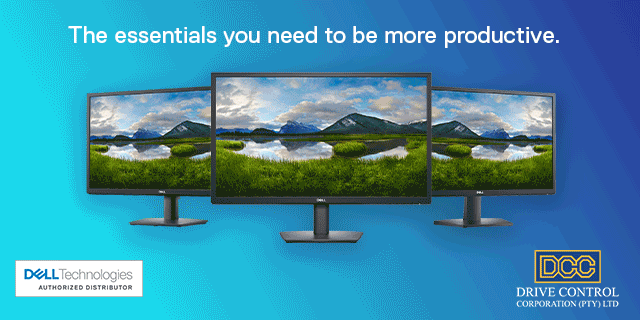Lessons learned on bringing digital transformation to the South African main market
By Industry Contributor 19 July 2022 | Categories: news
NEWS SPONSORED BY DELL E-SERIES 24" MONITORS FROM DCC:
By Andrew Dawson, MD of MACMobile
South Africa’s main market makes up a significant proportion of the local retail space and is one of the few segments in retail that is growing. As such, it presents a massive opportunity for parties further up the value chain to optimise processes, and digital transformation is one of the key strategies deployed to achieve this. There is a lot of investment in this space currently, with limited success, because the cost of fulfilling the promises of the technology being delivered is just too high and user uptake is too low. We need to find the balance, using data to understand and address the needs of this market segment, and ensure that economies of scale can be leveraged to drive down the cost of fulfilment.
Overpromising, but underdelivering
There is no shortage of innovative start-ups in the Fast-Moving Consumer Goods (FMCG) space, with many of them raising significant investment on the back of promises to revolutionise last mile delivery and business benefit. The challenge here is that the venture capital they raise is effectively subsidising the cost of fulfilling these promises, and at some point, this money will run out.
Sustainability can only be achieved when revenue generated covers the cost of delivering the service. If this is not the case, then the end users, in this instance the spaza shop owners we are trying to target, will not get what they were promised. This means that they will stop using the solution, economies of scale will worsen, business costs will rise further, and the technology becomes impossible to effectively support.
Finding the balance
In any technology deployment, onboarding is a critical element of success. You can have a database of millions of ‘users’, but if they do not understand the technology or how it can be used to their benefit, then adoption rates and long-term usage rates will be low. It is essential to engage with the potential user base and effectively onboard them to maximise uptake.
How will this technology offering make their lives easier, how will it deliver cost savings and improved efficiency? Will it help them to grow their basket and their commercial opportunities? Then, once the solution is sold, we need to address how those promises are being fulfilled. What we are promising versus what we are delivering is key to growth and leveraging this opportunity.
Learning from our experience
MACmobile piloted technology aimed at digital transformation in the main market, with an initial base of 23,000 spazas registered to use our app. In the nine months since then, we have generated R700 million in value for the customer and achieved around a 94% success rate for order fulfilment and delivery. Over these months, we have observed that 25% of our users are generating 95% of our repeat orders – these users are still consistently ordering a minimum of R5000 per order at least once a week.
This is proof that the concept is sound and sustainable, but it also means that 75% of those who tried the app are not getting full value from it. This is a huge opportunity to convert these 16,000 users who have tested the service, but are not using it consistently, into regular users. Before we can do that, however, we need to understand why. Is it a technical issue, are there problems with order fulfilment? Which customers were previously repeat users but have tapered off? What happened during our engagement that caused this?
Our approach is to identify the next band of those in our database who are the most likely to be converted into regular users and using the data we have, to understand these customers and how we can better meet their needs. We will use the 25% of our base that are consistent users as our baseline and benchmark, profiling them and then understanding which other customers are closest to this profile and how we can make the solution work for them. Key to our strategy is re-engaging with our existing base and focusing our efforts on growing usage within it, rather than attempting to grow the user base itself.
There are so many variables in this space that to build, deploy and sustain a long-term, viable platform that operates successfully in the main market is significantly challenging. Ultimately, we need to ensure that the cost to serve and the cost of delivery remain sustainable, and that the app is profitable from the operating model and revenue generated.
The main market is huge, with many opportunities to tap into, but without understanding the market and their needs and being able to reach spazas on their terms, success will prove elusive. If we do not work to build and maintain trust in these new digital channels, if we do not pay attention to the detail in the data and the messages that customers are sending, digital transformation in the main market will prove difficult.
There is no right or wrong way to go about achieving this, only a consistent process of trial, error and learning in which we make continual improvements and constantly adjust and adapt. We believe that data is the key to unlocking value, and that incremental growth is preferable over mass uptake that cannot be sustained.
Most Read Articles

Have Your Say
What new tech or developments are you most anticipating this year?




